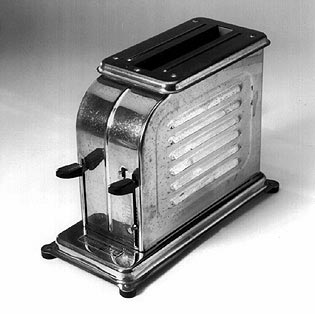A Brief History of the Toaster
6th Apr 2015
A Brief History of the Toaster
Most people cannot remember a time without the toaster. Any child of the eighties and nineties will remember the vast number of foods produced during those two decades that could be toasted and eaten on the way to school. This small, functional little appliance is an essential addition to almost every kitchen—but when was it invented and why? Here’s a brief history of the toaster:

1919: Invented by Charles Strite – While there were “toasters” before 1919, toasters as we know them today were invented by in 1919 by Charles Strite. He was a mechanic, working in Minnesota, who wanted to create a version of the standard toaster oven that was much easier to use and which could cook foods on both sides, quickly. Called the “slice toaster,” Strite obtained a patent in 1921 and his toaster was being produced by Waters-Genter.
1926: The first Toastmaster – Despite the fact that his toaster was already in production, Strite continued to work on the design, adding the pop-up mechanism that we are all so familiar with today. Allowing the food to pop up when it was done made the toaster even easier to use, even for children. Called the “Toastmaster,” the design has been largely unchanged since this date.
1930: Best thing since sliced bread – Who knew that the toaster actually pre-dated sliced bread? Pre-sliced bread was not introduced until 1930, by the Continental Baking Company. Wonder Bread was the first loaf to be sliced before sale. This caused a boom in toaster sales.
1960s: Proliferation of toasters – Prior to 1960, toaster were relatively expensive. Almost expensive as an oven or a fridge, only high and medium income families were able to afford them. As production costs dropped, the cost of the toaster dropped, too, and during this decade, it became a household staple.
1980s: Wider slots for wider food – Up until the 80s, if you wanted to toast a bagel, you had to slice it up just to make it fit. Now, slots were made wider, with gripping mechanisms that would adjust to the thickness of the food.
2000s: Toasters become customizable – Until the new century, most toasters were silver. Now, you can find toasters in just about every color, shape, and style, from very retro-looking designs, to very sleek and modern appliances.
